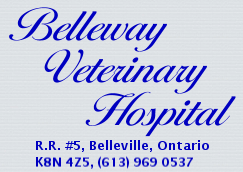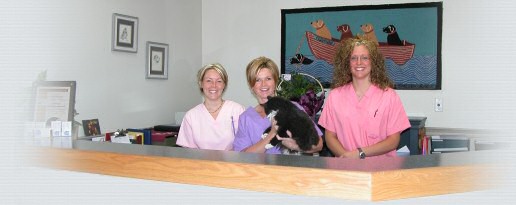Orthopedic Surgery
Orthopedic surgery refers to bone surgery. There are many different situations where bone surgery may be necessary including leg fractures, hip dysplasia, disc disease, etc. Most orthopedic surgeries can be performed at our clinic. Occasionally we refer our patients to a Board Certified surgeon to perform back surgery and other very complex surgeries.
Leg fractures are the most common orthopedic problem presented at our clinic and usually result from a mishap with an automobile. They can be treated in a variety of ways depending on the location and type of fracture.
A cast can be applied to the leg to treat certain fractures; however, many fractures will require surgical intervention.
"Pinning" is a surgical technique whereby a long stainless steal rod is inserted into the middle of the bone. The rod traverses the fractured area.
"Plating" is a surgical technique whereby a flat stainless steal ‘plate' is attached to the bone using screws on either side of the fracture.
"External fixation" is a technique used to stabilize fractures with a series of pins on the outside of the leg that pass through the skin and into the bone on either side of the fracture.
The method of repair will depend on the location and type of fracture present. We hope you do not have to use our orthopedic services for this purpose. In the unfortunate event that you do, you can be assured that we are able to proceed with a treatment that will enhance your pet's healing time and reduce the long term potential problems associated with a fracture or other orthopedic surgery.
Soft Tissue Surgery
Soft tissue surgery includes surgeries not associated with bone. Examples of soft tissue surgeries and their benefits are listed below.
Probably the most common soft tissue surgery performed at our clinic is the removal of masses or ‘lumps' on animals. Most of these masses or ‘lumps', once removed and tested, are benign (non-harmful); however, occasionally they are more serious. Early removal and accurate diagnosis of a ‘lump' is necessary to improve the outcome in your pet if the mass is cancerous. Lacerations are also common in pets and suturing will reduce the chance of infection, improve healing time and reduce scarring.
Many breeds of dogs are susceptible to ear infections. Surgical treatment on ears improves air flow into the ear canal and can reduce the occurrence of ear infections.
Tearing in your pet's eyes can mean an infection is present or it may be a sign the cornea (outer layer of the eye itself) has been damaged. A damaged cornea may require soft tissue surgery to allow the cornea to heal faster with less scarring. Less scarring will improve the ability of your pet to see. In some animals, the cornea (outer layer of the eye) may be damaged by the eyelid hairs surrounding the eye. Surgical intervention involving the eyelid improves the comfort in these animals. It also reduces the chances of corneal scarring and enhances the animal's vision in the long term.
Laser Surgery
Veterinary medicine has evolved dramatically over the last decade. Newer technologies at more affordable costs have opened up exciting avenues for veterinarians to explore. Lasers have long been employed in human medicine for surgical cases because of the benefits to the patient. Now our animal patients can also benefit from the use of lasers. A laser is a very concentrated beam of light at a very specific wavelength and intensity. Visibility is significantly enhanced for the surgeon and due to the excellent control of hemostasis (bleeding), the surgery is often performed in shorter time. Patient recovery is also enhanced, and often they can go home safely earlier than without the help of the laser.



